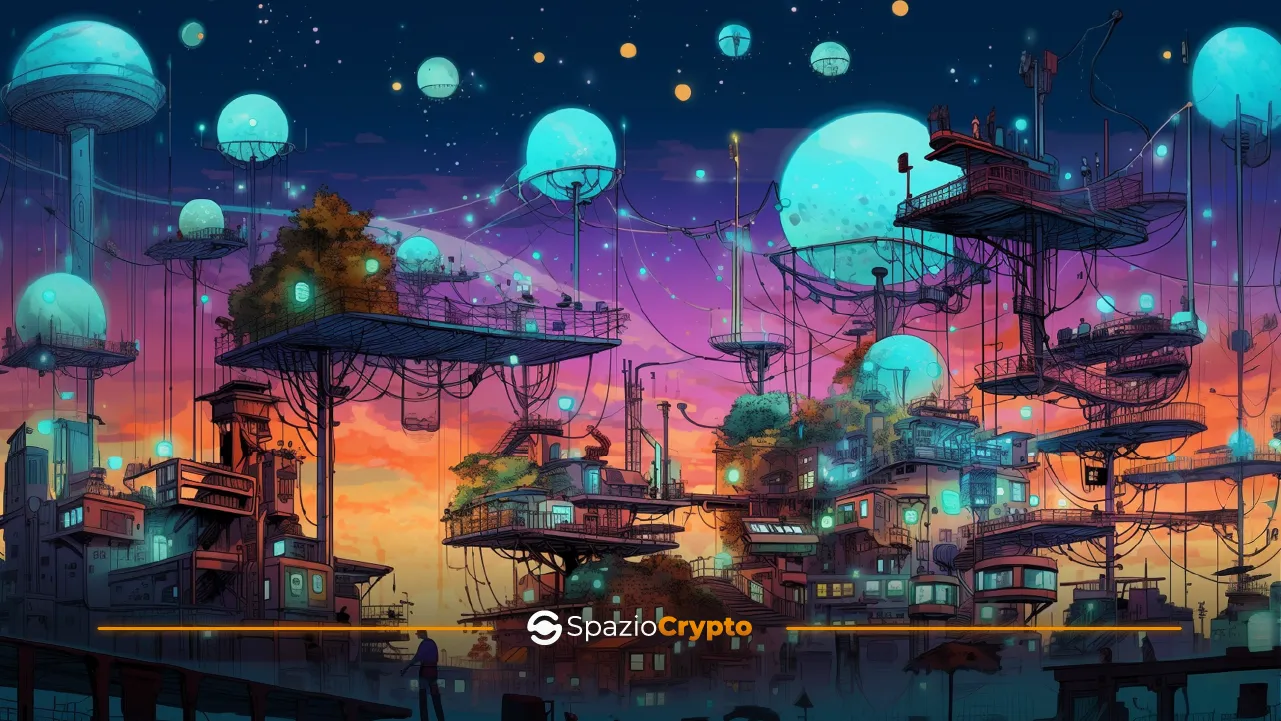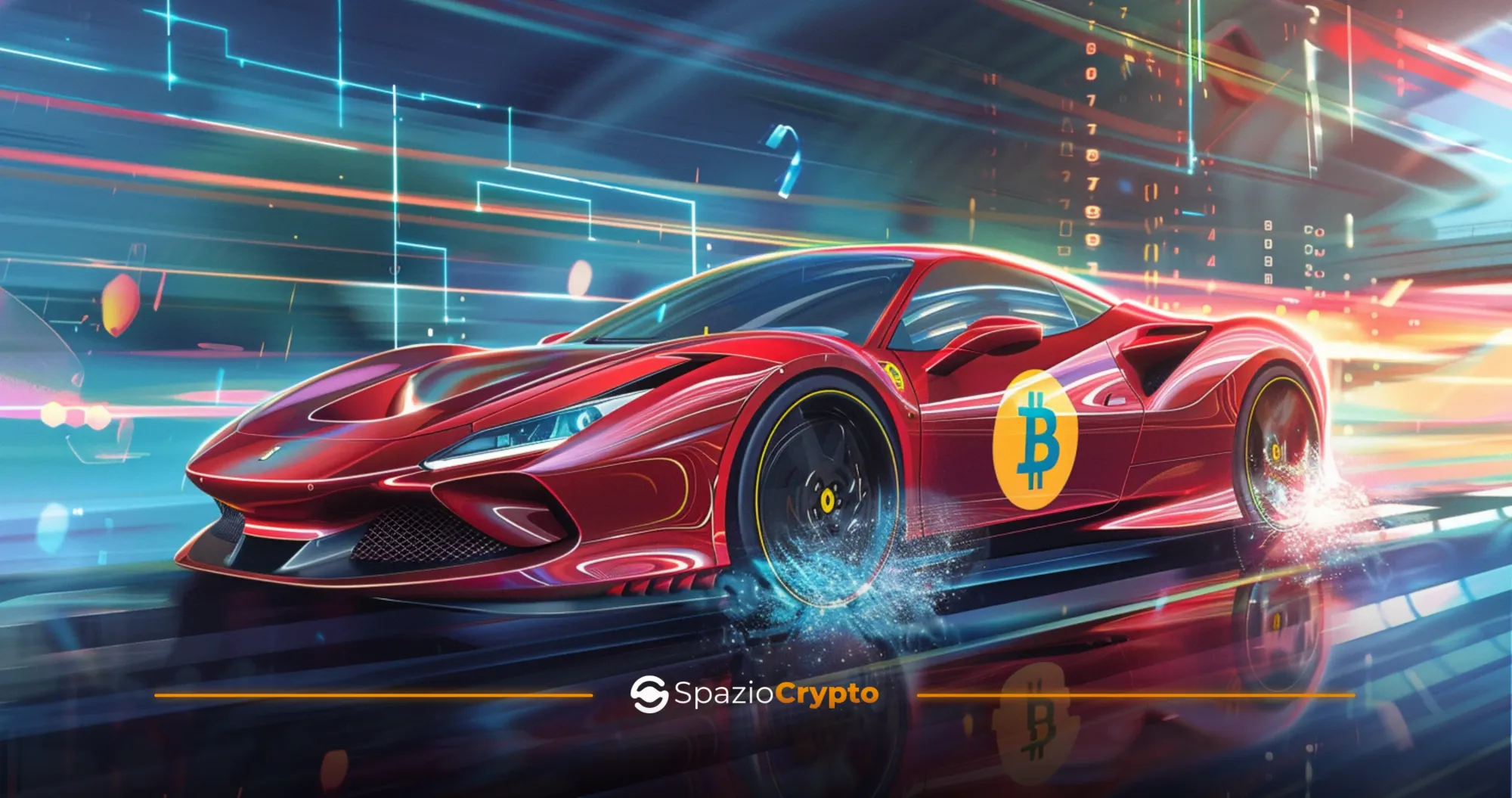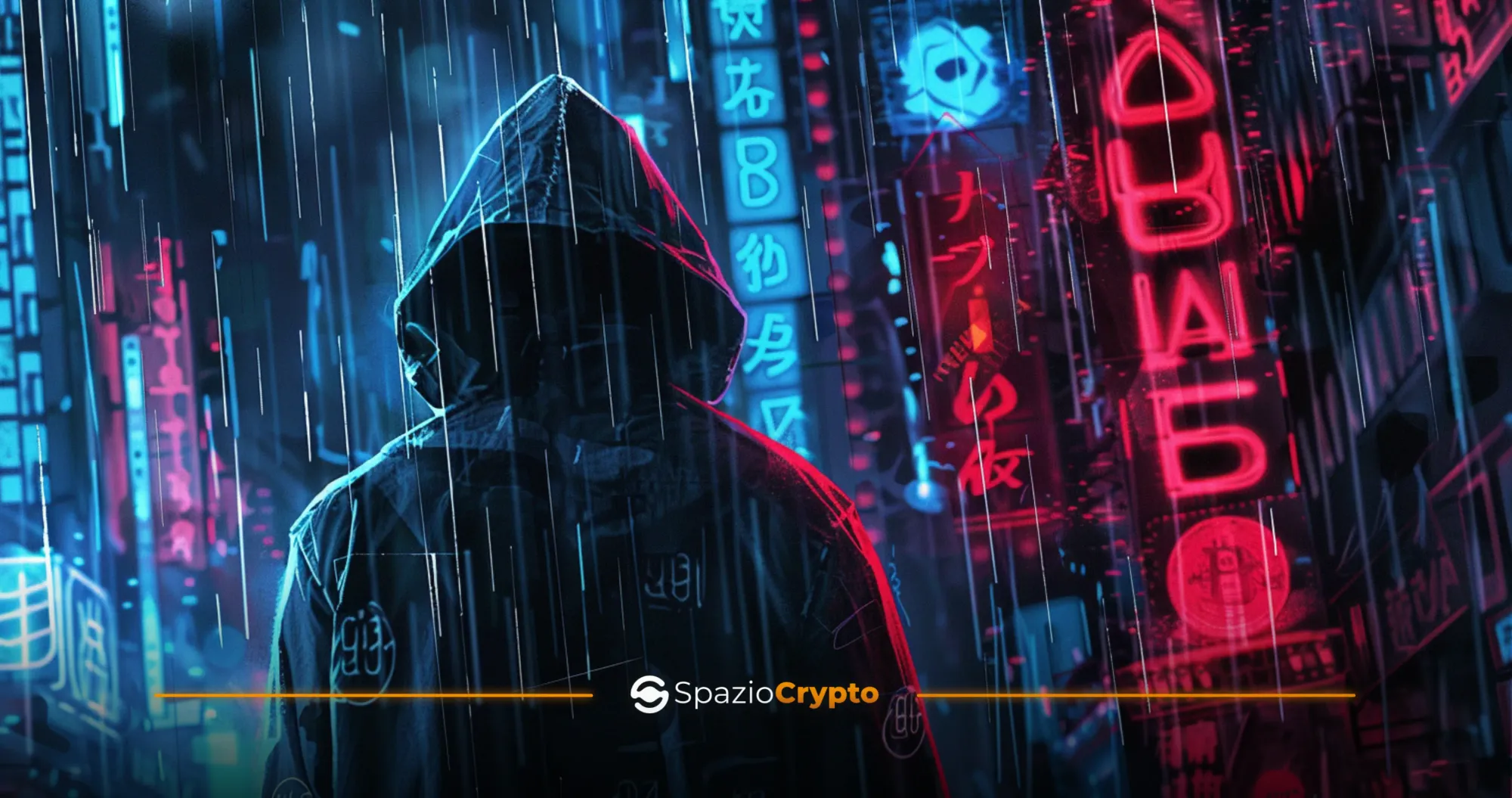Two technologies are emerging as key pillars of the future: blockchain and the Internet of Things (IoT). The blockchain, originally developed as an infrastructure for cryptocurrencies, has rapidly evolved into a revolutionary technology with the potential to transform a wide range of sectors, from finance to healthcare, from logistics to energy. Similarly, the Internet of Things, with its interconnected network of smart devices, is defining a new paradigm of interaction between the physical and digital worlds.
In this context, the integration of blockchain and IoT offers unprecedented promise of innovation. The combination of these two technologies paves the way for new business models, significant improvements in security and transparency, and greater operational efficiency across a wide range of industries.
In the course of this Spaziocrypto article, we will explore the fundamentals of blockchain and IoT, analysing how these technologies work individually and how their convergence can shape a new, more transparent and automated future.
Basics of Blockchain
In technological innovation, the blockchain emerges as one of the most revolutionary inventions of our time. Originally conceived as the foundation on which the world of cryptocurrencies, such as the famous Bitcoin, is built, blockchain has quickly established itself as a technology capable of redefining multiple sectors and processes, breaking free from the shadow of the financial world to encompass areas such as logistics, healthcare, digital identity management and much more.
But what makes blockchain so extraordinary? Let's start by defining its beating heart: blockchain is, at its core, a distributed digital ledger, a kind of large ledger shared and replicated among a multiplicity of nodes (or computers) within a network. This ledger, however, is distinguished by one key characteristic: immutability. The information recorded on a blockchain is permanent and cannot be altered once it has been confirmed and added to the blockchain. This immutability mechanism is ensured by the use of advanced cryptography and consensus processes that require the consent of the majority of network participants for the addition of new blocks.
But how does this blockchain that gives life to the blockchain actually work? Each block contains a set of transactions or data, and each new block is linked to the previous one through a unique code, known as a 'hash', which acts as a fingerprint. This continuous concatenation creates a sequence of blocks, each of which contains a reference to the previous block, thus creating a chain of interconnected blocks. This system offers an unprecedented level of security and integrity: altering a single transaction would require modifying all subsequent blocks, a practically impossible operation given the complexity and distribution of the network.
But the blockchain is not limited to simply recording financial transactions. Its potential is vast and varied, with the applications of blockchain extending far beyond the world of cryptocurrencies. Areas such as supply chain traceability benefit from the transparency and immutability offered by blockchain, enabling greater trust and security throughout the entire production and distribution chain. Digital identity management is made more secure and efficient through blockchain-based systems that allow individuals to control and share their information securely and privately.
These are just a few examples of the broad spectrum of applications that blockchain offers. Its real power lies in its ability to revolutionise existing paradigms, redefining the concept of trust and decentralisation and paving the way for new forms of collaboration and exchange in the digital world.
Basic Concepts of the Internet of Things (IoT)
In the age of digital interconnectedness, the Internet of Things (IoT) is emerging as a key technology in the transformation of our world into an increasingly connected and intelligent ecosystem.
The IoT refers to the network of physical devices embedded with sensors, software and other technologies that enable the collection and exchange of data. These devices, often referred to as 'things', are able to communicate with each other and with other systems, paving the way for a wide range of smart applications and services.
IoT objects collect data from their sensors and transmit it via communication networks, such as Wi-Fi, Bluetooth or mobile phones, to data management platforms. These platforms process the data, analyse it and use it to generate useful information for users or to trigger automatic actions. IoT objects can take different forms, from simple environmental sensors to smart home appliances, from connected vehicles to automated industrial plants. Each device is designed to perform a specific function and contribute to the IoT ecosystem in its own unique way.
One of the strengths of the IoT is its ability to interconnect heterogeneous devices and systems, enabling smooth communication and intelligent collaboration between the different components of the IoT ecosystem. The IoT has applications in a wide range of sectors, from agriculture to manufacturing, from healthcare to the smart city. Its potential extends from remote monitoring to automated process management, from predictive maintenance to personalised services.
Exploring these basic concepts, we are ready to understand how IoT integrates with blockchain to create innovative and secure solutions.
Benefits and Challenges of Combined Use of Blockchain and IoT
Both powerful catalysts for innovation, blockchain and the Internet of Things (IoT) have proven their value individually, but it is in their convergence that revolutionary new possibilities open up.
The combination of blockchain and IoT offers a number of unique advantages, including enhanced security, transparency and data integrity, as well as the ability to automate and secure the execution of smart contracts between autonomous devices.
Integration Advantages
- Enhanced Security: The blockchain provides an immutable and transparent ledger that protects sensitive data generated by IoT objects. This reduces the risk of data manipulation and ensures that information is trustworthy and verifiable.
- Transparency and Traceability: The transparency of data recorded on the blockchain enables complete traceability of transactions and events generated by IoT objects throughout the entire lifecycle. This visibility improves the management of supply chains, food safety and other areas where traceability is crucial.
- Automation of Smart Contracts: The combination of blockchain and IoT enables the automated execution of smart contracts, autonomous codes that are activated when certain conditions are met. These contracts enable the automatic transfer of value, the triggering of predetermined actions and much more, without the need for intermediaries.
- Applications in Numerous Environments: Projects and initiatives are already exploiting the convergence of blockchain and IoT in areas such as renewable energy, asset management, logistics and healthcare. For example, the traceability of food from farm to table, through the use of IoT sensors and blockchain records, ensures the freshness and authenticity of food products.
- Potential Future: The possibilities offered by the convergence of blockchain and IoT are still largely unexplored. The large-scale implementation of these technologies could revolutionise entire sectors, creating new business models and reshaping global economic dynamics.
Challenges to be faced
- Scalability: Scalability remains a significant challenge when it comes to implementing large-scale blockchain solutions to support a large amount of IoT devices, as explained in the Blockchain Trilemma. Existing blockchain infrastructures may have limitations in terms of processing capacity and data volume management.
- Costs: Implementing blockchain and IoT solutions can involve significant upfront costs, including investments in hardware, software and infrastructure. In addition, there are ongoing expenses associated with operating and maintaining such systems.
- Technological Complexity: The technological complexity associated with the design, development and integration of blockchain and IoT solutions can be high. Specialised technical expertise is required to successfully implement and manage such systems.
Approaches to Tackle the Challenges
- Research and Continuous Development: Continuous technological innovation is essential to overcome the challenges of scalability, cost and technological complexity. Investing in research and development can lead to more efficient and cost-effective solutions over time.
- Standardisation and Interoperability: The adoption of common standards and protocols can facilitate interoperability between different blockchain and IoT solutions, reducing complexity and integration costs.
- Entity Collaboration: Collaboration between different industries, academic institutions and governmental organisations can accelerate innovation and foster the development of more effective and sustainable blockchain and IoT solutions.
Future Perspectives of the Convergence between Blockchain and IoT
The collaboration between blockchain and the Internet of Things (IoT) is paving the way for a future full of possibilities and innovation.
Blockchain and IoT technologies will continue to evolve and improve, becoming more efficient, secure and scalable. New protocols and algorithms may emerge to address current challenges and enable new applications and use cases. Furthermore, the adoption of common standards and protocols will be essential to facilitate interoperability between different blockchain and IoT solutions. This will enable broader adoption and greater collaboration between industry players.
Adoption on a Large Scale
As blockchain and IoT technologies become more mature and use cases prove successful, large-scale adoption can be expected across a wide range of sectors and industries. Organisations may begin to implement blockchain and IoT solutions as an integral part of their daily operations, and as a result, the convergence of blockchain and IoT will have a significant impact on society and the economy. It is expected to create new job opportunities, foster business innovation and competitiveness, and could help solve global challenges such as environmental sustainability and equitable access to services.
Despite the promise, there will be challenges to be faced along the path to full integration between blockchain and IoT. Issues such as data privacy, cybersecurity and governance will need to be carefully considered and managed. At Spaziocrypto, as we explore these future prospects, we can glimpse a world in which the convergence of blockchain and IoT will revolutionise the entire technological landscape, creating new opportunities and transforming our lives in ways we can barely imagine








